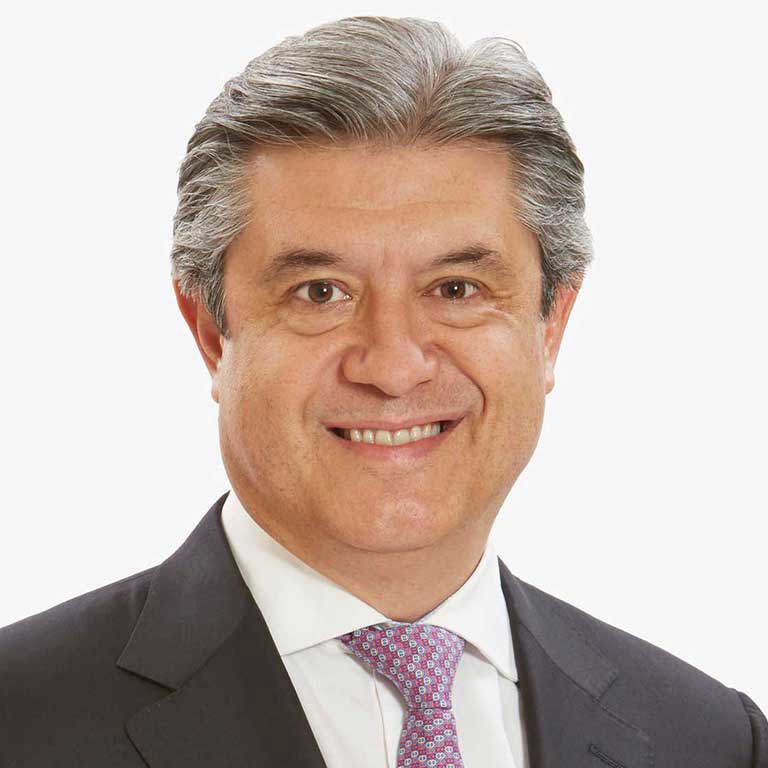The Customer Confidential Podcast
A Customer Letter that Shaped a Leader
Ignacio "Nacho" Deschamps of Scotiabank explains why he has long put customers and technology at the heart of his career in financial services.
The Customer Confidential Podcast
Ignacio "Nacho" Deschamps of Scotiabank explains why he has long put customers and technology at the heart of his career in financial services.

I’ve known Ignacio “Nacho” Deschamps for a long time. Today, he’s the group head of international banking and digital transformation at Scotiabank, but he’s been a customer-focused executive throughout his career in banking. And that’s unusual.
Banks in most countries have long emphasized operational efficiency and net interest margins far more than earning customer loyalty. Frankly, customer experience typically took a back seat. And leaders didn't pay much attention to episodes that built relationships with customers.
Only recently has the combination of consolidation (in the US market, primarily) and disruptive pressure from fintech startups (globally) made many banks begin to realize it’s time to up their game when it comes to customer experience. In my own career, I’ve rarely met a banker who has so thoroughly dedicated his focus to customers, customer experience and loyalty as consistently as Nacho.
In the first of our two-part discussion on The Net Promoter System podcast, Nacho explained Scotiabank’s digital customer experience transformation (Listen to Part 2 here.). The bank’s teams develop solutions by tasking one local organization with the lead on a particular episode or capability, then adopting and adapting its solution for the other markets. They focus their solutions on meeting specific customer needs, increasing their market success.
This approach, with a laser-like focus on understanding local customer needs, turns out to be somewhat intuitive for Nacho. The reason he’s always invested so much in direct customer needs and observations is that they provide the most crucial source of ideas about how a bank can improve its products, its customer episodes and—importantly—operational efficiency.
You can listen to my conversation with Nacho on iTunes, Stitcher or your podcast provider of choice, or through the audio player below.
In the following excerpt, Nacho talks about receiving an angry letter that long ago helped cement his interest in customers.
Rob Markey: Something that I've never asked you, but I've always intended to, is, why is it that you, in particular, have become such a customer-focused executive?
Ignacio Deschamps: Probably, it's a combination of two things. One, that customers have helped me build new solutions in banking throughout my career.
Rob Markey: What do you mean by that?
Ignacio Deschamps: Let me give you an example. I received a letter of a small business customer in Mexico many years ago, when I was managing retail, complaining that we had the worst solution for small business lending. And I went to her office. She hardly—she didn't want to receive me. And based on what she explained what her needs were, honestly, I went back, talked to the team. We started a very creative process.
We launched a small business credit line based on a credit card. It was a novelty at the time. And then I received a letter [from her] saying this is the best solution. And still to date, I'm in contact with that person, with that customer. And this happened probably 20 years ago.
Rob Markey: Wow.

Explore more episodes of The Customer Confidential Podcast.
Ignacio Deschamps: And she participated later in many videos of the bank, voluntarily, because she really wanted to share with other customers. So that's one thing.
Second, because probably I am very curious. And I've embraced technology all my career. I think technology has been a driver of better customer experience. I'm proud of this. Our best time as an industry. But I've always been curious. And that has helped me, always, to think of the customer. The innovation at the end is interesting, but it's important if it's from the customer lens. That's when it's really exciting.
Rob Markey: I'm curious about this customer, the [woman with the small business]. What made you pay attention to [her]? You get letters; you have interactions with lots of people. Why that one? Why did that stick out?
Ignacio Deschamps: [I] still [get letters] to date. But more when I was in an operational role, I used to answer or comment or answer emails, phone calls of every customer that reached out to my office. And this customer in particular, her letter was very good in terms of very specific feedback of what didn't work. It was a pharmaceutical company, [a] small business for cosmetics in Mexico City.
And that's why, still to date, when I have a problem with our business or customers that I don't understand, I go to the branch. I try to go directly to the staff that is working with customers, because that's where we get the best insights. And we can solve problems faster. But of course, sometimes the best thing is to go directly to the customer. And this was the case.

Did you like or dislike the latest podcast? Are there people you'd like to hear Rob interview? Let us know!
Rob Markey: You know, the criticism or the objection that a lot of people would raise with the way that you did that is, “Hey, that's grandmother research. That's just like one customer, one situation. And a lot of executives have their little pet things that they get excited about, because they had one customer interaction.” What's wrong with that argument against what you did?
Ignacio Deschamps: I think it would be wrong if it's the only way to react to customer problems. I would say, at the end, this has to be combined with a system. It has to be combined with analytics, and more importantly, with a cultural change.
But a good way to connect that in a systematic way in the Pulse, which is our customer assistance system, our customer experience system, is the callbacks. Because the callback at the end is a systematic way to do that with much better information of what really are the customers that need your support faster.
Rob Markey: So in a way, that's an institutionalized way of doing what you did with that one customer.
Ignacio Deschamps: Yes. But on the other hand, I would say if you only have that, and you do it because you feel it's an obligation, it wouldn't be the same. I really feel it is part of my job…. Many years ago, customers came to banks and we had a lot of say in approving anything or lending or services. But today, customers have many choices, and many other services that are in the frontier with banking are also a competition to us.
So today, I think having a customer-centric organization, which is the main thrust of our efforts here, to really build a strong customer culture, where we make decisions, we listen, we act quickly. And we can see the progress of our ability to be a preferred option for the customer.

Scotiabank’s Ignacio “Nacho” Deschamps talks about what he has learned from Net Promoter System® journeys at three different banks around the world.